Related Research Articles

Japanese Brazilians are Brazilian citizens who are nationals or naturals of Japanese ancestry or Japanese immigrants living in Brazil or Japanese people of Brazilian ancestry.

The Brazil socio-geographic division is a slightly different division than the Brazilian Division by Regions. It separates the country into three different and distinctive regions:
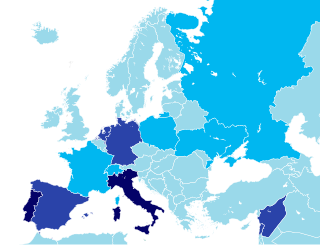
Immigration to Brazil is the movement to Brazil of foreign peoples to reside permanently. It should not be confused with the forcible bringing of people from Africa as slaves. Latin Europe accounted for four-fifths of the arrivals. This engendered a strikingly multicultural society. Yet over a few generations, Brazil absorbed these new populations in a manner that resembles the experience of the rest of the New World.
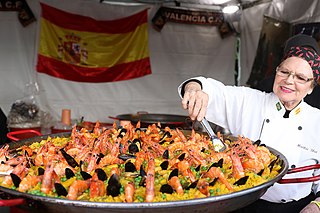
Spanish Brazilians are Brazilians of full or partial Spanish ancestry.

Portuguese Brazilians are Brazilian citizens whose ancestry originates wholly or partly in Portugal. Most of the Portuguese who arrived throughout the centuries in Brazil sought economic opportunities. Although present since the onset of the colonization, Portuguese people began migrating to Brazil in larger numbers and without state support in the 18th century.

White Brazilians refers to Brazilian citizens who are considered or self-identify as "white", typically because of European or West Asian descent from Lebanon and Syria.
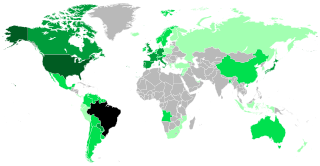
Brazilians are the citizens of Brazil. A Brazilian can also be a person born abroad to a Brazilian parent or legal guardian as well as a person who acquired Brazilian citizenship. Brazil is a multiethnic society, which means that it is home to people of many ethnic origins, and there is no correlation between one's stock and their Brazilian identity.

Brazilian society is made up of a confluence of people of Indigenous, Portuguese, and African descent. Other major significant groups include Italians, Spaniards, Germans, Lebanese, and Japanese.

Russian Brazilians are Brazilian citizens of full or partial Russian ethnic background or Russian-born people residing in Brazil. The term can also refer to someone with a Brazilian mother and Russian father, or vice versa.

Brazil had an official resident population of 203 million in 2022, according to IBGE. Brazil is the seventh most populous country in the world, and the second most populous in the Americas and Western Hemisphere.
Spanish emigration peaked in the late 19th and early 20th centuries, and it was concentrated to Argentina, Uruguay and Cuba. Between 1882 and 1930, 3,297,312 Spaniards emigrated, of whom 1,594,622 went to Argentina and 1,118,960 went to Cuba. Brazil only started to be an important destination for immigrants from Spain in the 1880s, but the country received the third largest number of Spanish emigrants, behind only the two aforementioned countries. Spaniards also made up the third largest national group to immigrate to Brazil, after the Italians and Portuguese.
European immigration to Brazil refers to the movement of European people to Brazil. It should not be confused with the colonisation of the country by the Portuguese.
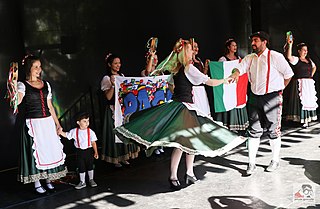
Italian Brazilians are Brazilians of full or partial Italian descent, whose ancestors were Italians who emigrated to Brazil during the Italian diaspora, or more recent Italian-born people who've settled in Brazil. Italian Brazilians are the largest number of people with full or partial Italian ancestry outside Italy, with São Paulo being the most populous city with Italian ancestry in the world. Nowadays, it is possible to find millions of descendants of Italians, from the southeastern state of Minas Gerais to the southernmost state of Rio Grande do Sul, with the majority living in São Paulo state. Small southern Brazilian towns, such as Nova Veneza, have as much as 95% of their population of Italian descent.
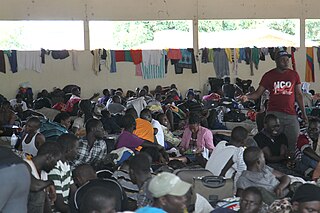
A Haitian Brazilian is a Brazilian person of full, partial, or predominantly Haitian ancestry, or a Haitian-born person residing in Brazil.
Japanese cuisine has existed in São Paulo since the beginning of the 20th century, when Japanese workers began immigrating to Brazil to work on coffee farms. Japanese Brazilians adapted their native cuisine to incorporate the types of food available in Brazil, such as replacing rice with corn or cassava.

The Immigration Museum of the State of São Paulo is a museum of immigration in the Mooca neighbourhood in east São Paulo, Brazil. It is located in the Immigrant Inn building, which opened in 1887.
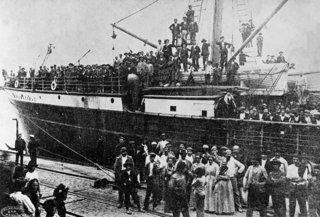
The Italian immigration in Minas Gerais was the migratory movement of Italians to the Brazilian state of Minas Gerais that occurred between the end of the 19th century and the first decades of the 20th century. It was one of the states that received the most Italian immigrants in Brazil, only behind São Paulo and Rio Grande do Sul.
Japanese immigration in Brazil officially began in 1908. Currently, Brazil is home to the largest population of Japanese origin outside Japan, with about 1.5 million Nikkei (日系), term used to refer to Japanese and their descendants. A Japanese-Brazilian is a Brazilian citizen with Japanese ancestry. People born in Japan and living in Brazil are also considered Japanese-Brazilians.
European immigration to the Americas was one of the largest migratory movements in human history. Between the years 1492 and 1930, more than 60 million Europeans immigrated to the American continent. Between 1492 and 1820, approximately 2.6 million Europeans immigrated to the Americas, of whom just under 50% were British, 40% were Spanish or Portuguese, 6% were Swiss or German, and 5% were French.
The Ibicaba Revolt, also known as the Partners' Revolt or the Immigrants' Revolt, was a protest led by foreign workers on the Ibicaba Farm, located in the city of Limeira, in São Paulo. It occurred on December 24, 1856, and opposed the exploitation of labor by Brazilian masters, who had opted for the partnership system to replace slavery. Founded in 1817 by Senator Nicolau Pereira de Campos Vergueiro, Ibicaba Farm served as the headquarters of the first and one of the most important colonies in Brazil. It was the pioneer in replacing slave labor with that of European immigrants, mainly Swiss and Germans.
References
- 1 2 3 4 5 Trento, Angelo (2022). Do outro lado do Atlântico: Um século de imigração italiana no Brasil (1 ed.). Unesp.
- ↑ Cenni, Franco (2002). Italianos no Brasil: "andiamo in 'Merica-. Edusp.
- ↑ Balbinot, Giovani (2018). "Detratoes e defensores da imigração italiana para o Brasil: o Decreto Prinetti de 1902 e a Exposição Mundial de 1906". Saeculum - Revista de História. 38.
- ↑ "DECLÍNIO DA IMIGRAÇÃO ITALIANA NO BRASIL – COMO ACONTECEU?". 2021-06-28. Retrieved 2023-08-23.
- 1 2 Hutter, Lucy Maffei. "Imigração Italiana: Aspectos gerais do processo imigratório". Rev. Inst. Est. Brasileiro. 27: 59–73.